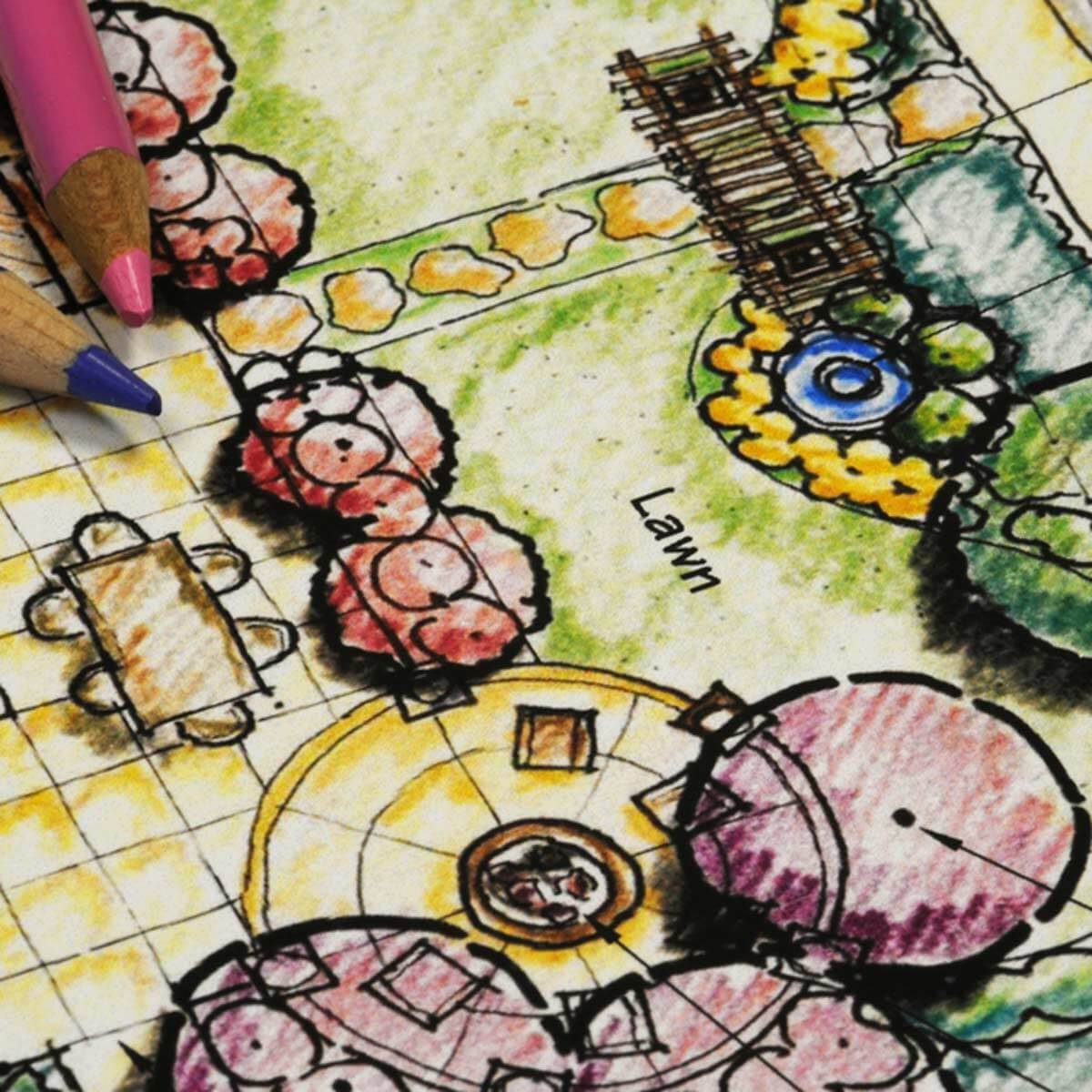
Simple Landscaping Ideas: Planning the Perfect Garden
Die-hard gardeners will tell you that a garden is a work in progress. Even established gardens can benefit from a fresh infusion of simple landscaping ideas from season to season. But if you thoughtfully plan before you plant, your green space will beautifully endure for years to come—without costly and time-consuming alterations or additions.
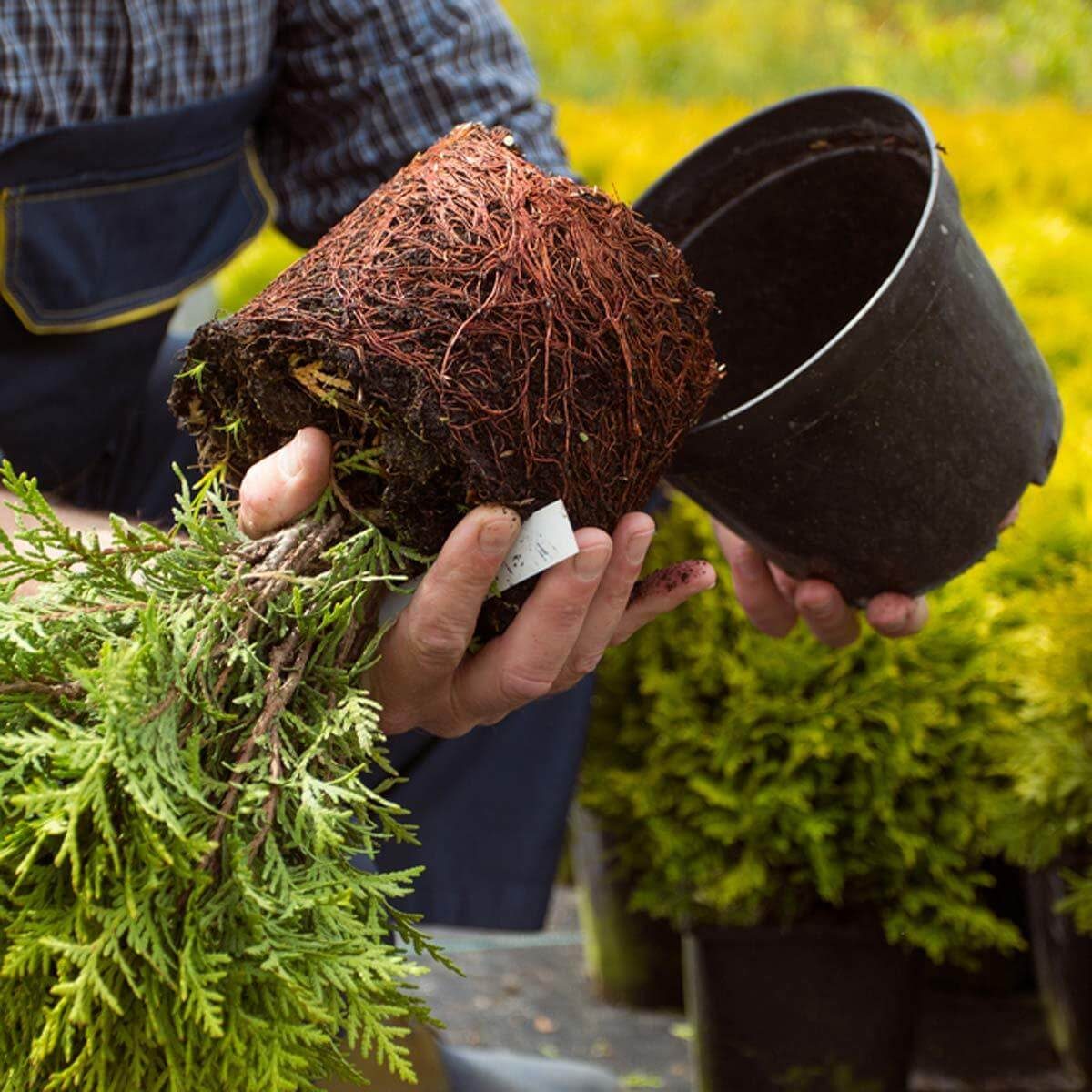
Take Advantage of Leafless Panoramas
With most trees and shrubs showing only bare bones, winter is a fine time for spotting ho-hum holes in your landscape. Check for areas that could use a punch of winter interest—consider adding evergreens, berry-bearing shrubs and trees with interesting forms or bark to boost four-season appeal. You should also check out these tips for bringing your garden indoors for the winter.
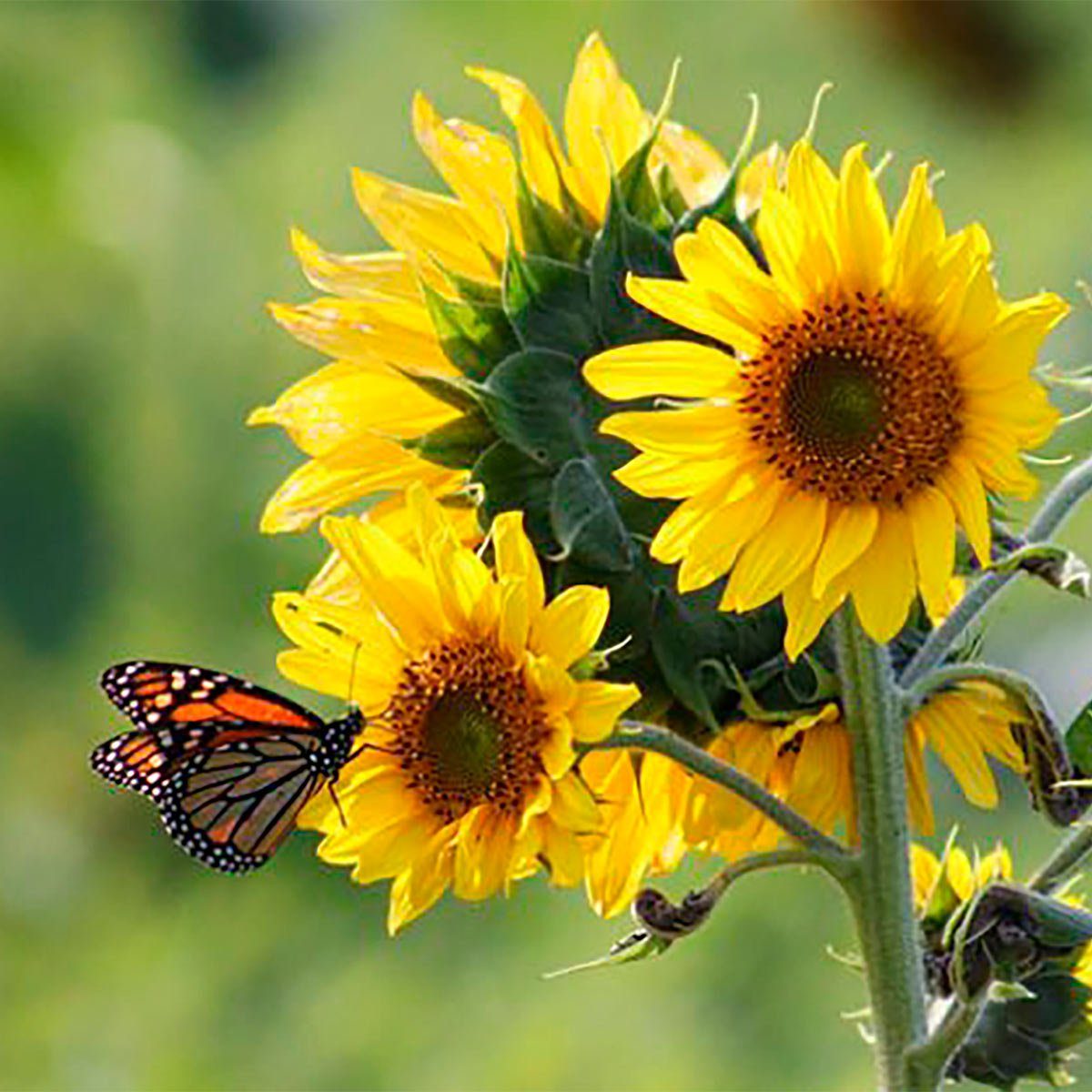
Know Your Site
Spend a day or two checking how many hours of sun your gardens receive each day to ensure you incorporate light-appropriate plants into your design. Keep in mind that full-sun plants require at least 6 hours of sun, partial-shade plants need between 3 and 6 hours and shade-tolerant plants benefit from 2 or 3 hours of direct light or from receiving indirect or filtered light all day. These are some of the best summer flowers to grow in Canada.
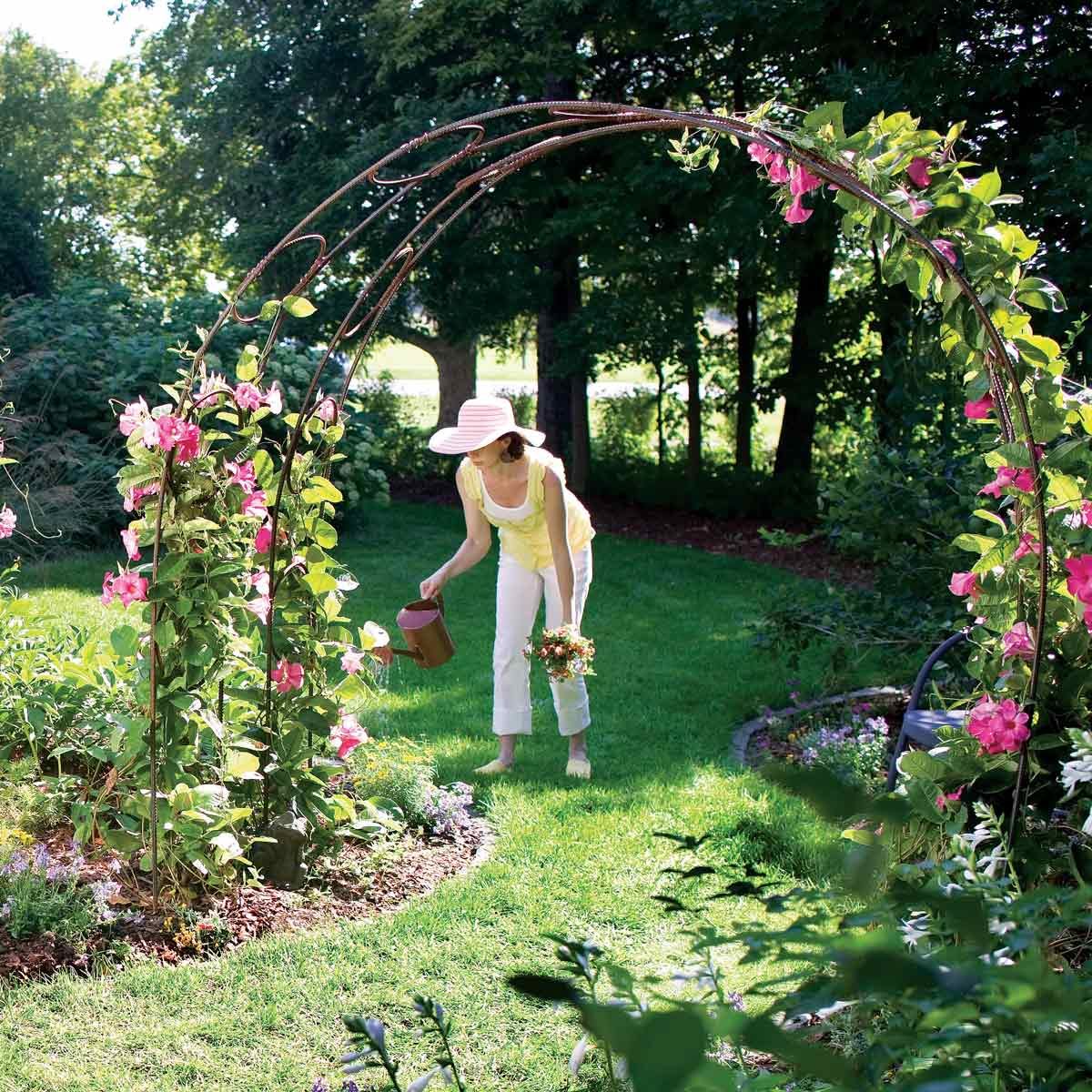
Consider the Big Picture
Sketch out an overall picture of your yard, including entertainment areas, your house and other buildings. Enlarge the sketch and mark off existing landscape features like trees, shrubs and gardens. Pencil in proposed plantings to see how they fit within the existing landscape. Looking for inspiration? Check out these garden design tips.
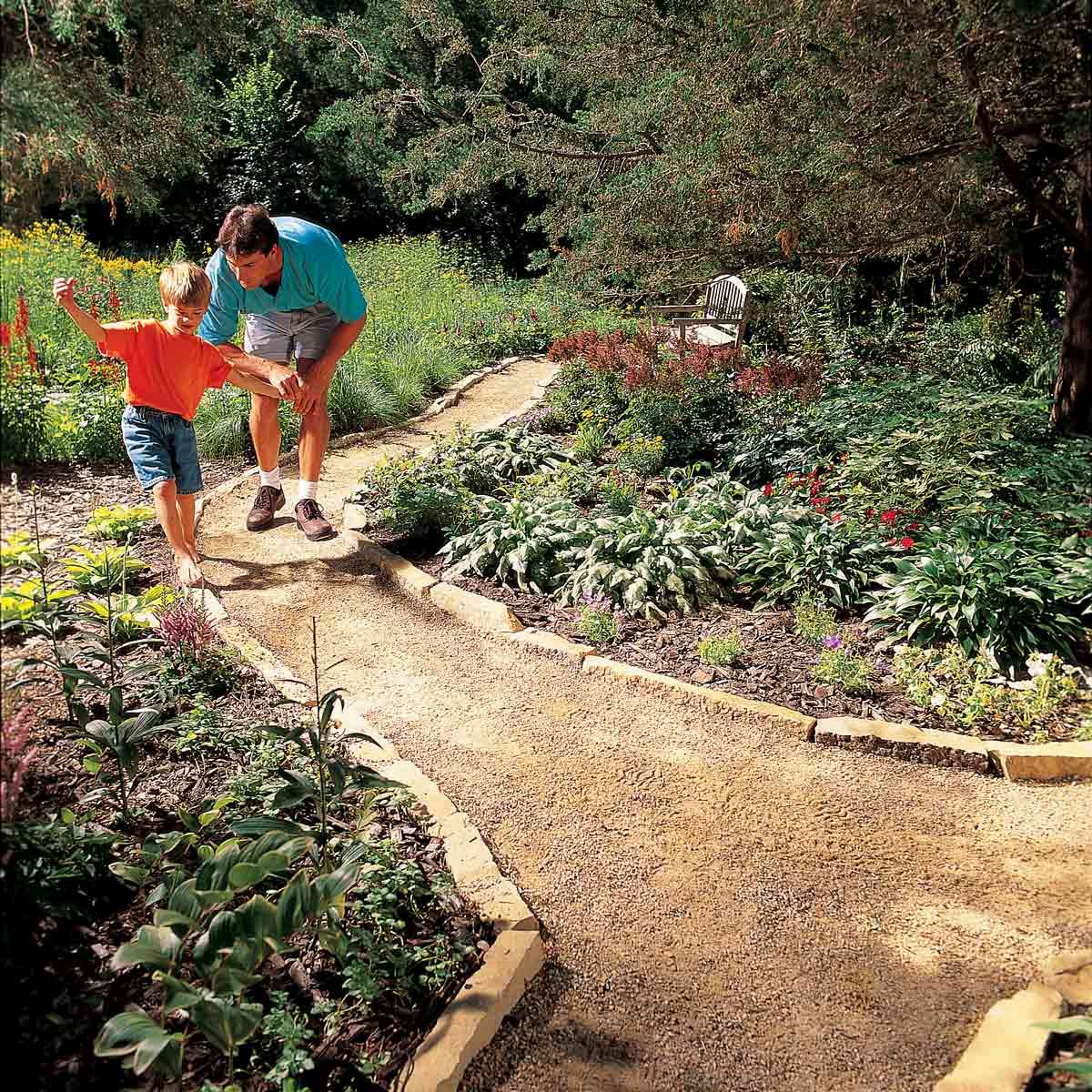
Allow Plenty of Room
Design extra-deep borders large enough to house an array of low, medium and tall plants and that allow you extra space to add more plants as the mood strikes.
No back yard? No problem! Use these urban gardening tips to add greenery to even the smallest porch, patio or balcony.
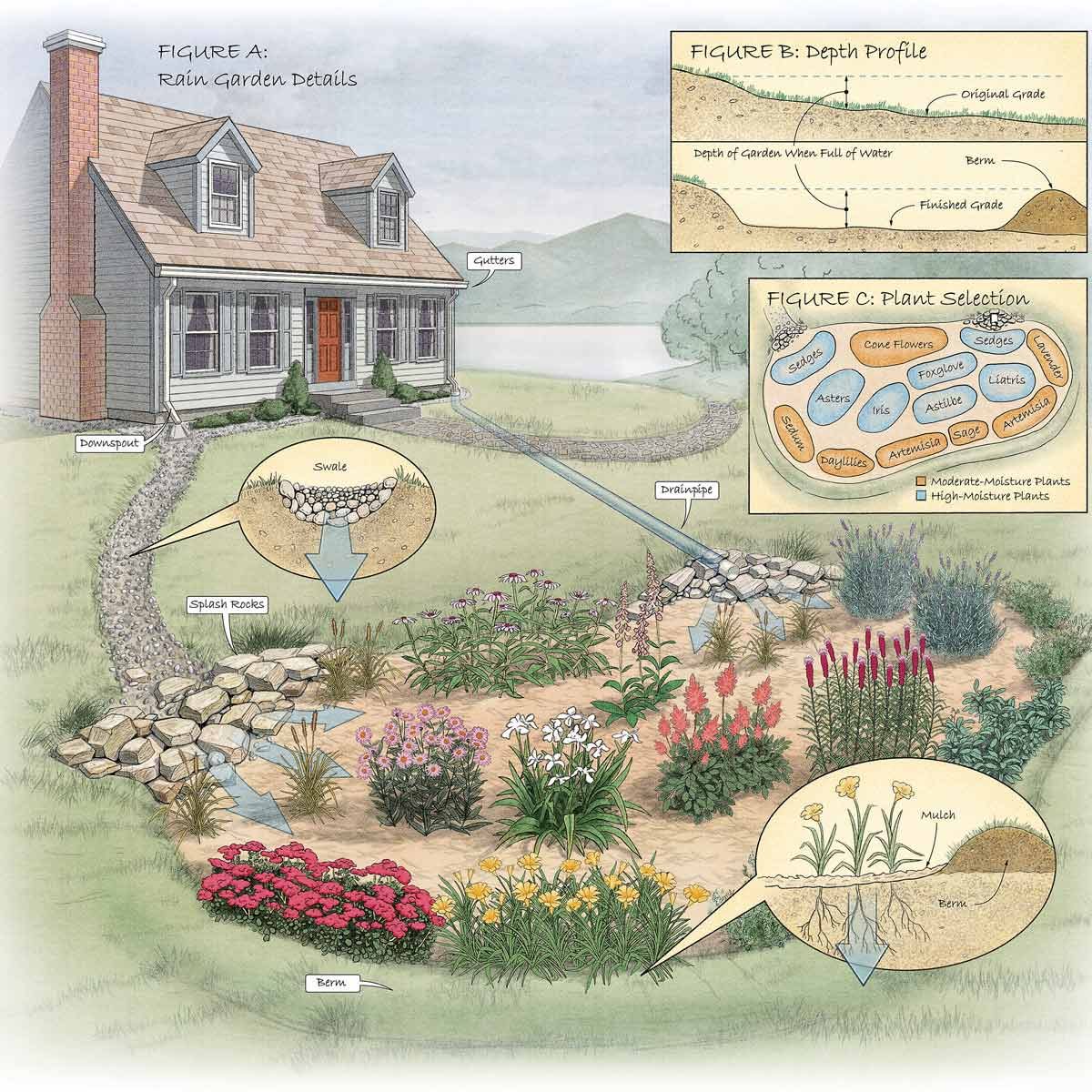
Pace Off Measurements
Before you sketch, estimate the amount of space you wish to dedicate to a planting bed. Use the measurements to draw a blueprint to scale on graph paper. Keeping in mind plants’ mature sizes, pencil in desired plants to get a realistic idea of how many you can fit into the space.
Interested in growing a healing garden? Consider adding these medicinal plants to your plot.
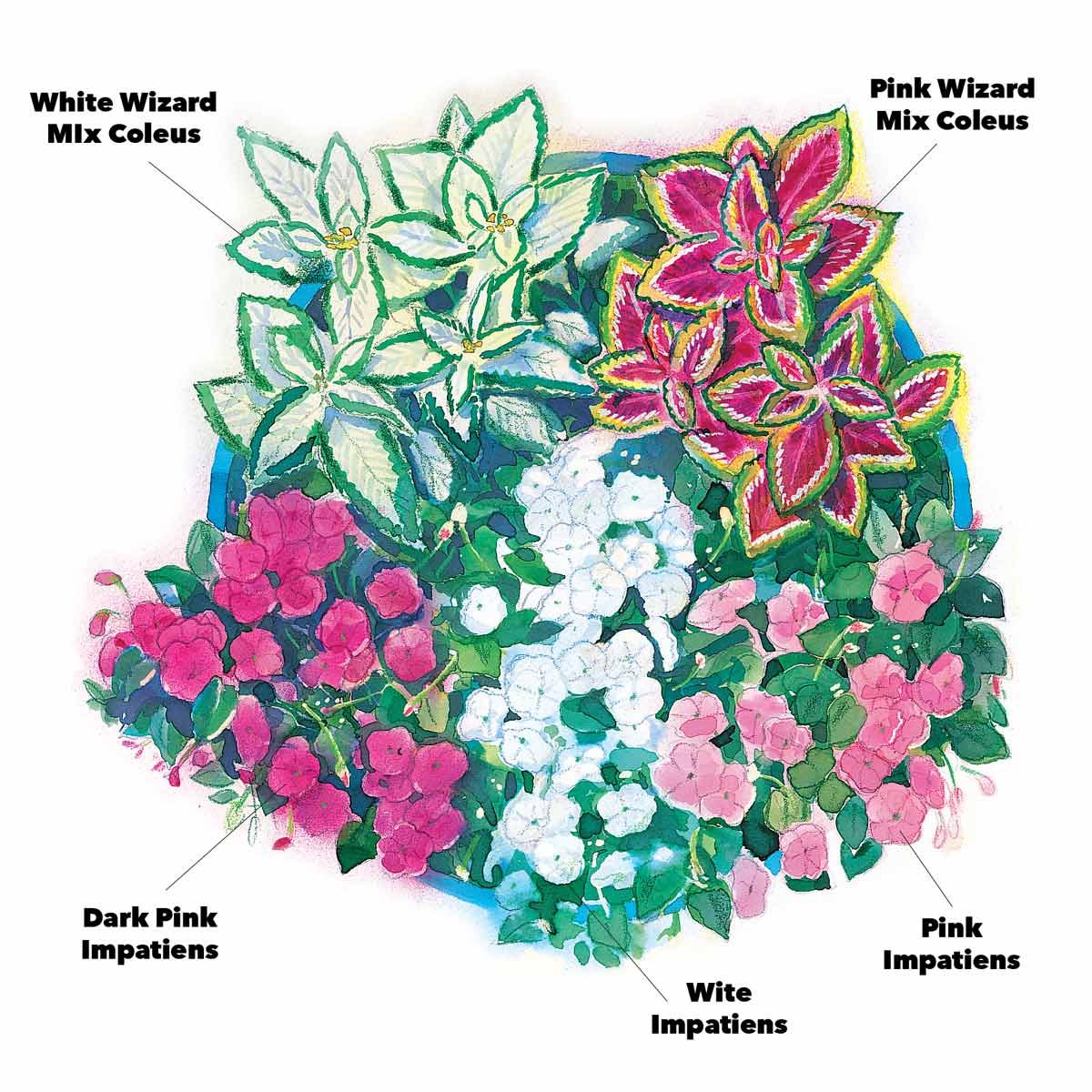
Colour in the Lines
On your plan, use markers, watercolors or colored pencils to colour in existing plantings. Then colour in your planned additions to make certain that the old and new hues complement each other.
Don’t forget, green is a colour too! If you want lush green grass, take heed of these 13 things you should never do to your lawn.
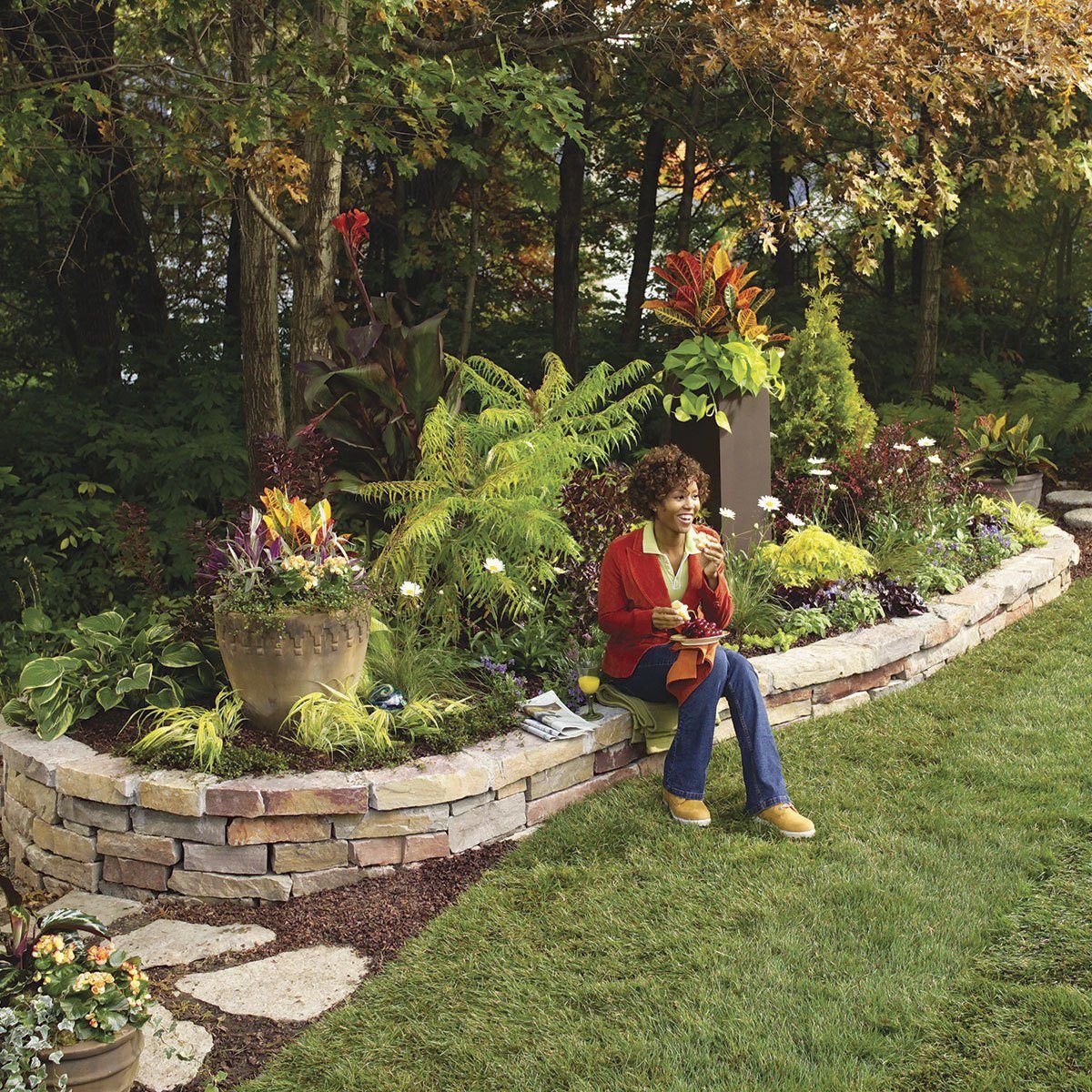
Make Like a Landscape Pro
Design gardens that carry the eye from earth to sky. Anchor borders and beds with structural plants, such as trees or tall shrubs, and then layer in climbing vines, smaller shrubs, varying-height perennials and sprawling ground covers.
Here are some simple landscaping ideas that will attract birds to your garden.
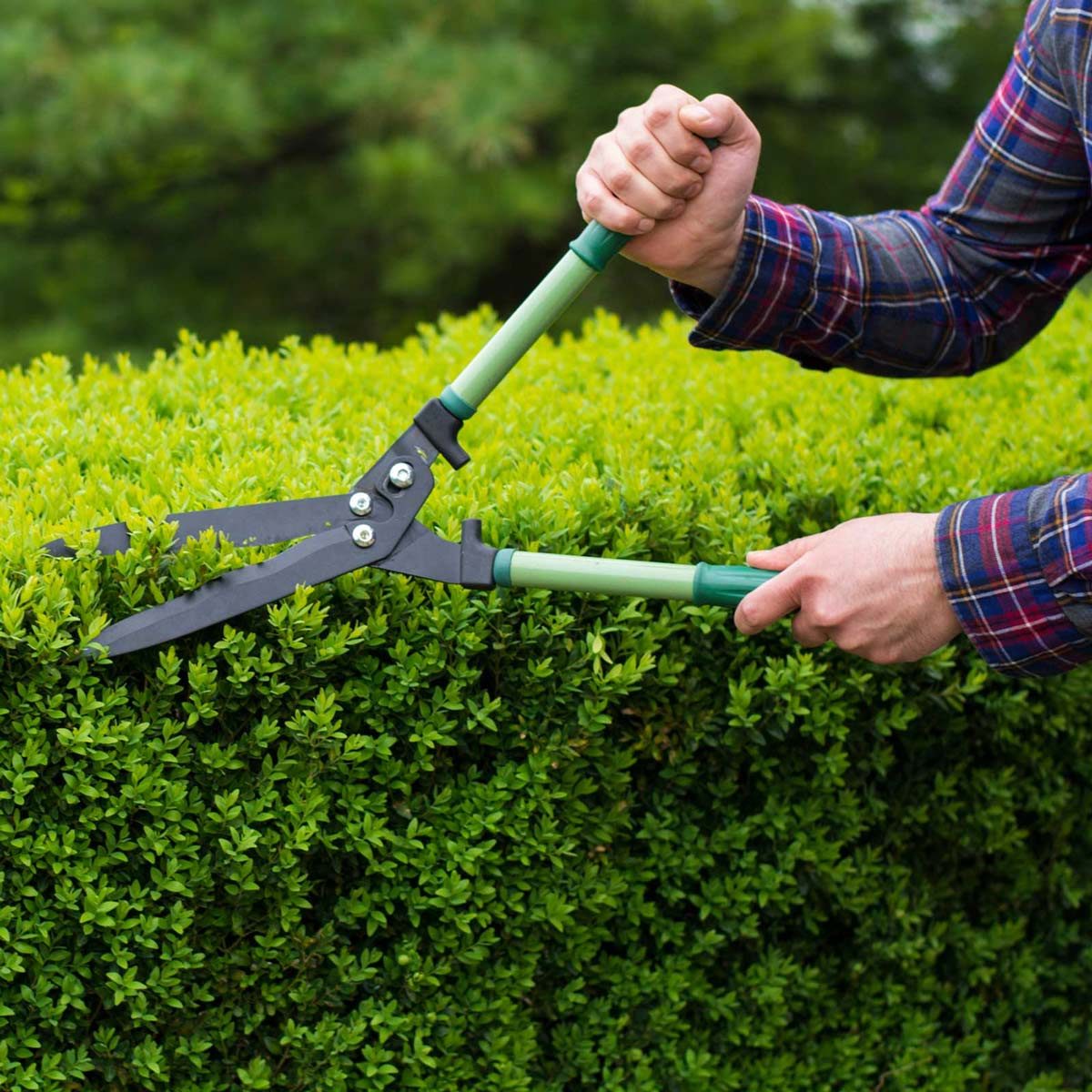
Settle on a Style
Determine whether you’re going for a clipped formal look, casual cottage appeal, a native prairie or a combination of styles.
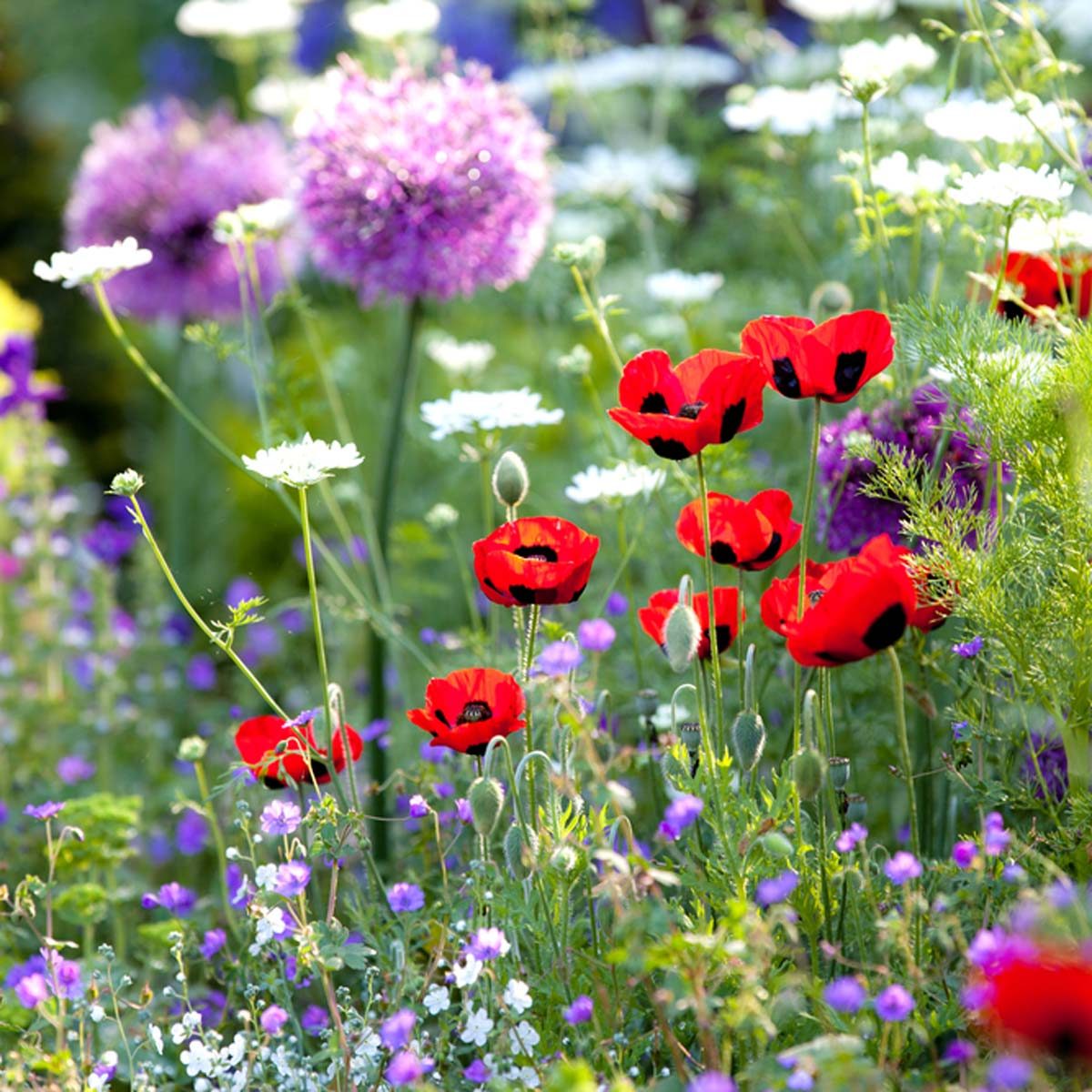
Pick a Palette
Are you partial to pastels? Do red-hot hues get your creative juices flowing? Working within a colour scheme will help you set a cohesive scene and prevent you from buying unsuitable plants in weaker moments.
Here are the seven insects you actually want in your garden this summer—and simple landscaping ideas for attracting more of them!
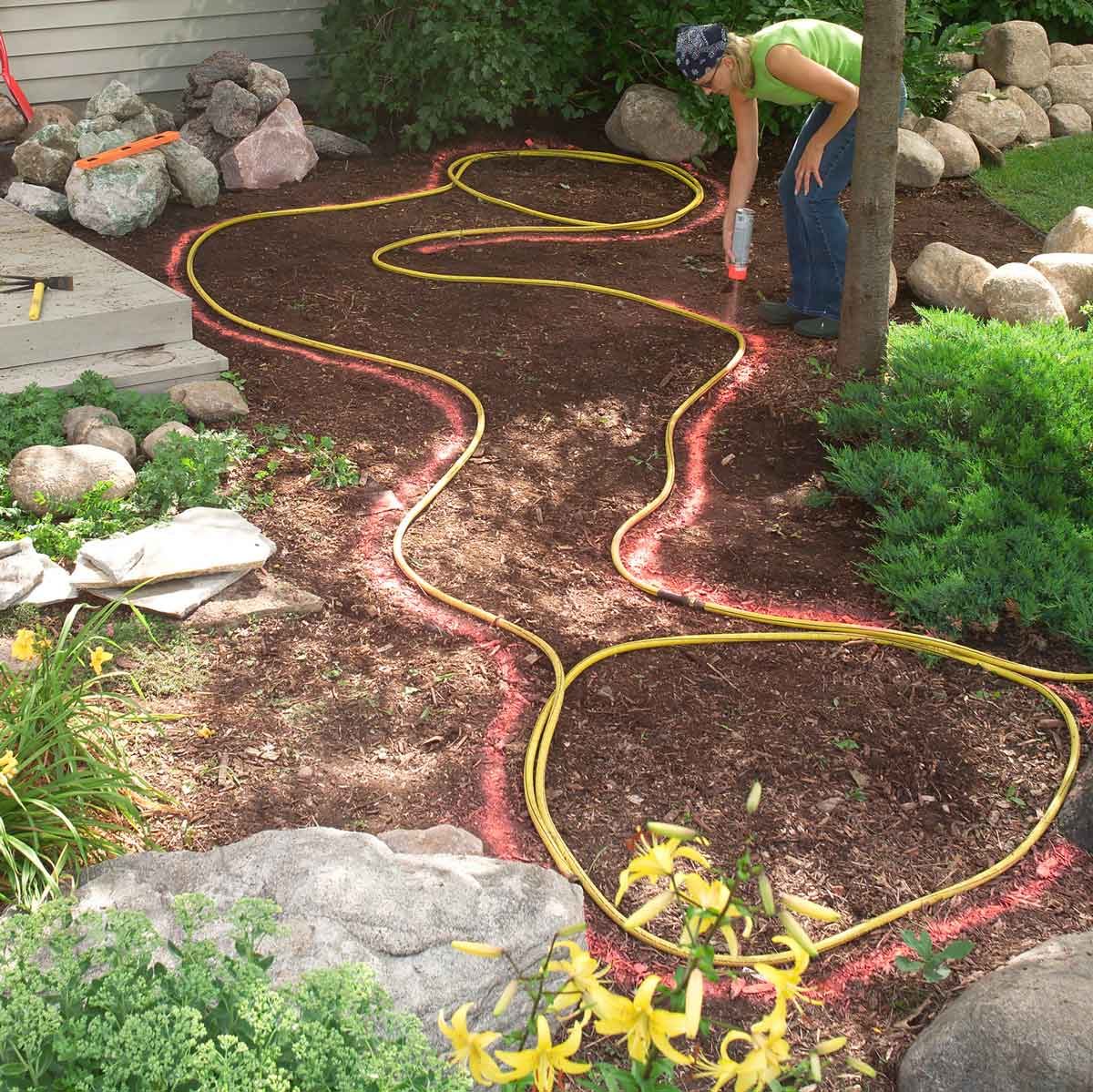
Lay the Groundwork
When planning your design, include pathways, arbours, ponds, large containers, fountains, statuary and garden benches that draw both foot traffic and attention through the garden. Here are eight of the best annuals for container gardening.
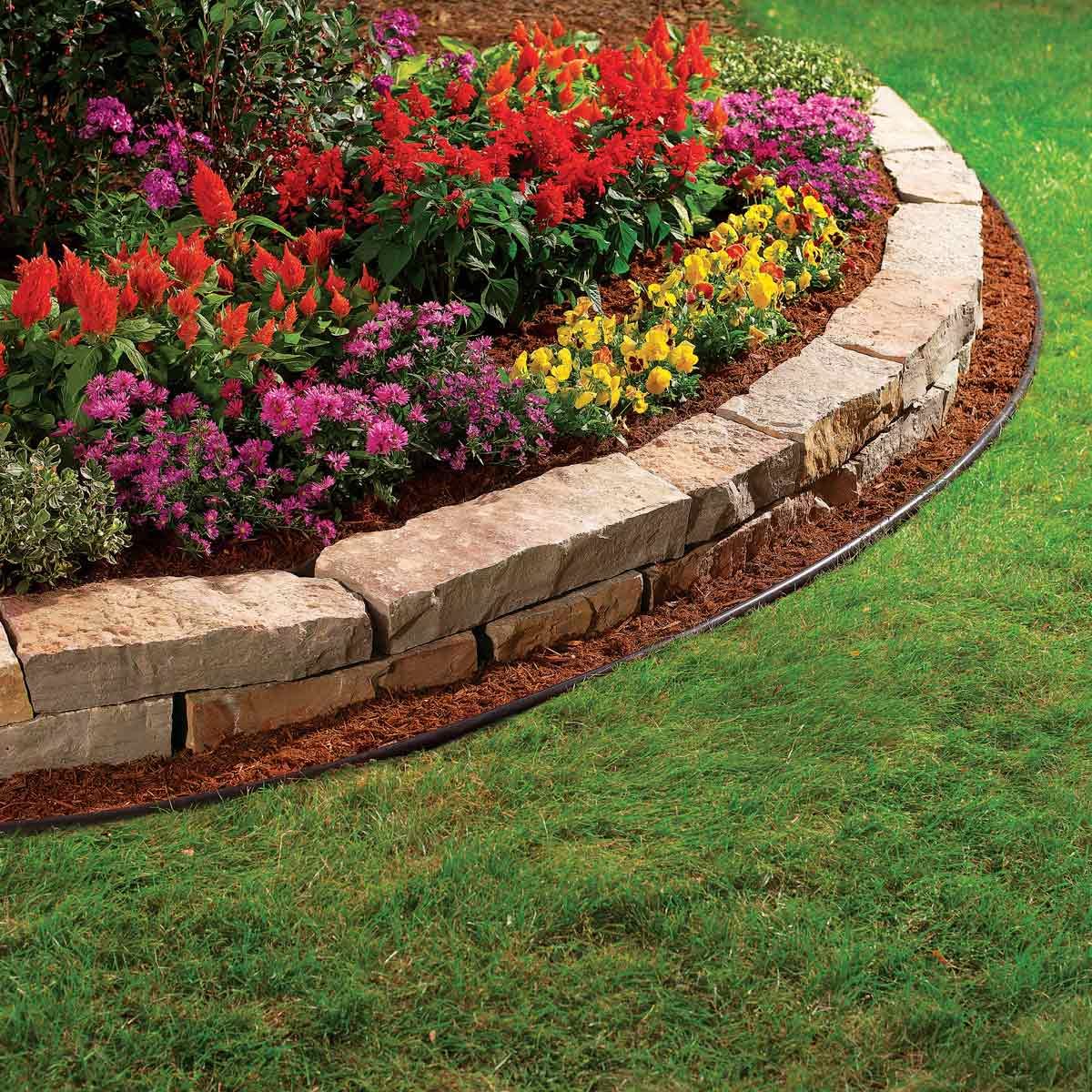
Cultivate Perennials for Pennies
Designate a sunny corner for growing perennials from seed. Sow the seeds in early spring, and by mid- to late summer, you’ll have loads of plants to fill out your borders.
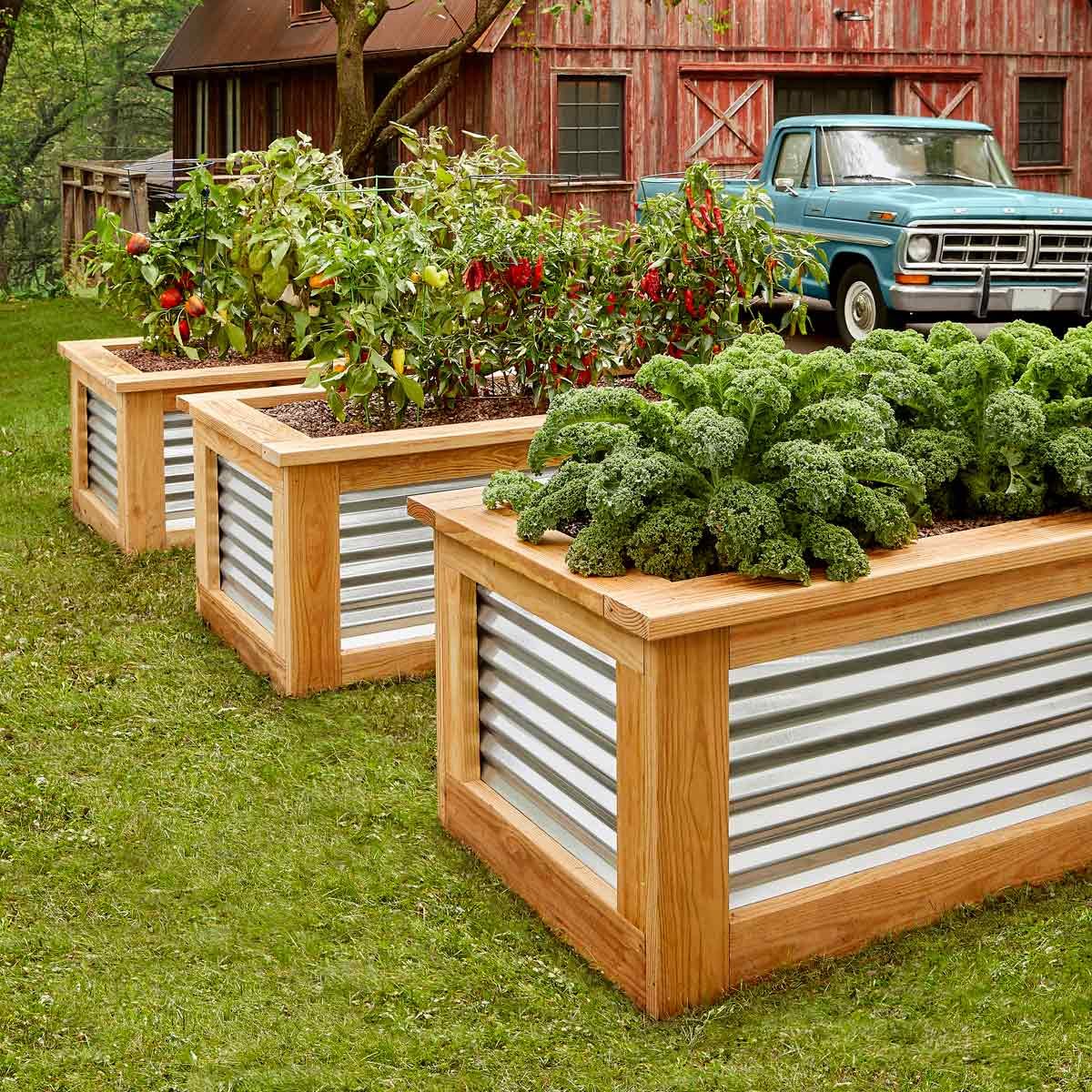
Add Raised Beds for Vegetable, Herb and Cutting Gardens
Growing your own produce and easy-care annual flowers for summer arrangements saves money. Plus, raised beds take less time to weed.
Here are more tips for growing a vegetable garden—anywhere!
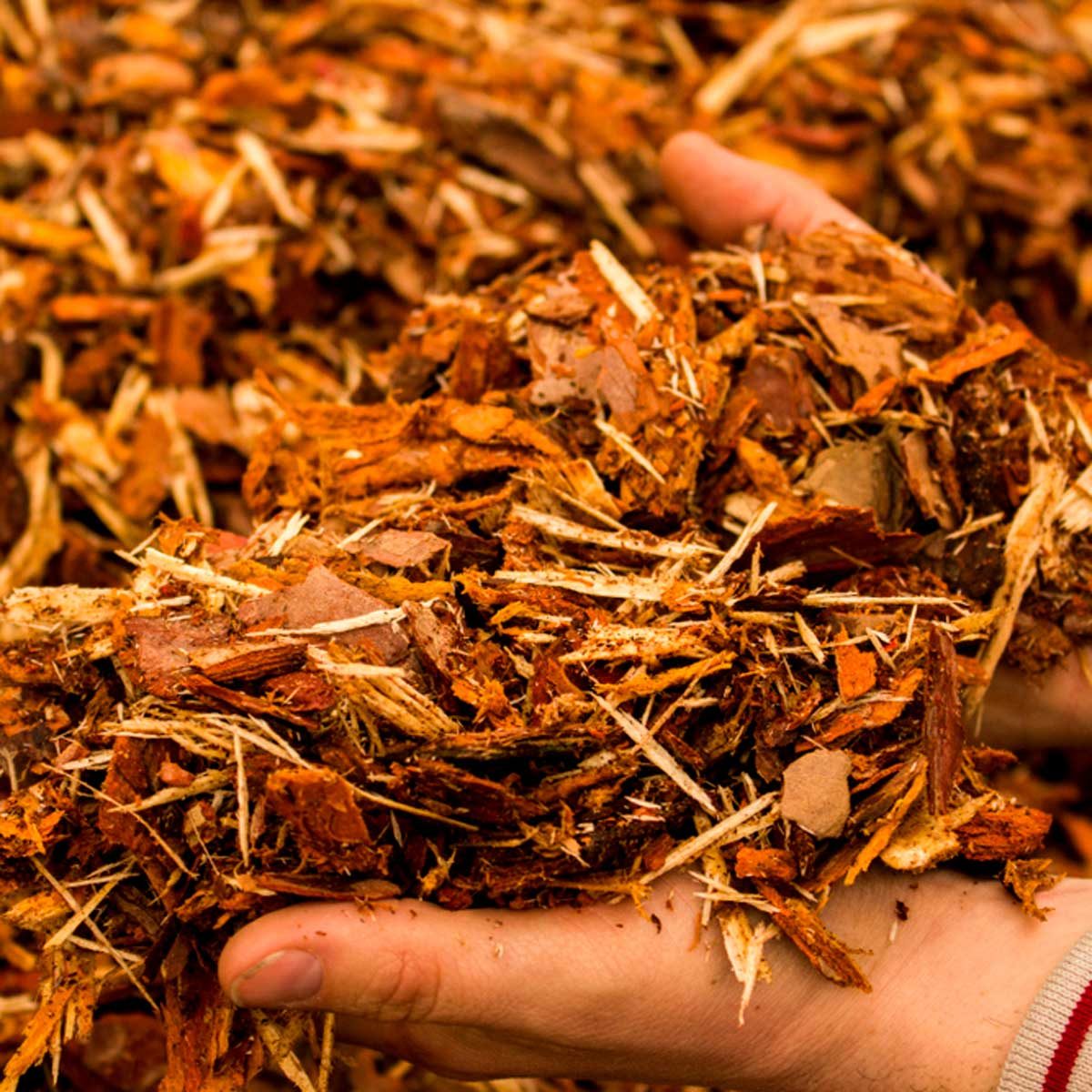
Create a Budget
Determine how much you want to spend for this year’s plantings, mulch and soil amendments. Plan on putting in paths and buying the larger, structural plants first. When budgets are tight, think about filling in your design over the course of several years.
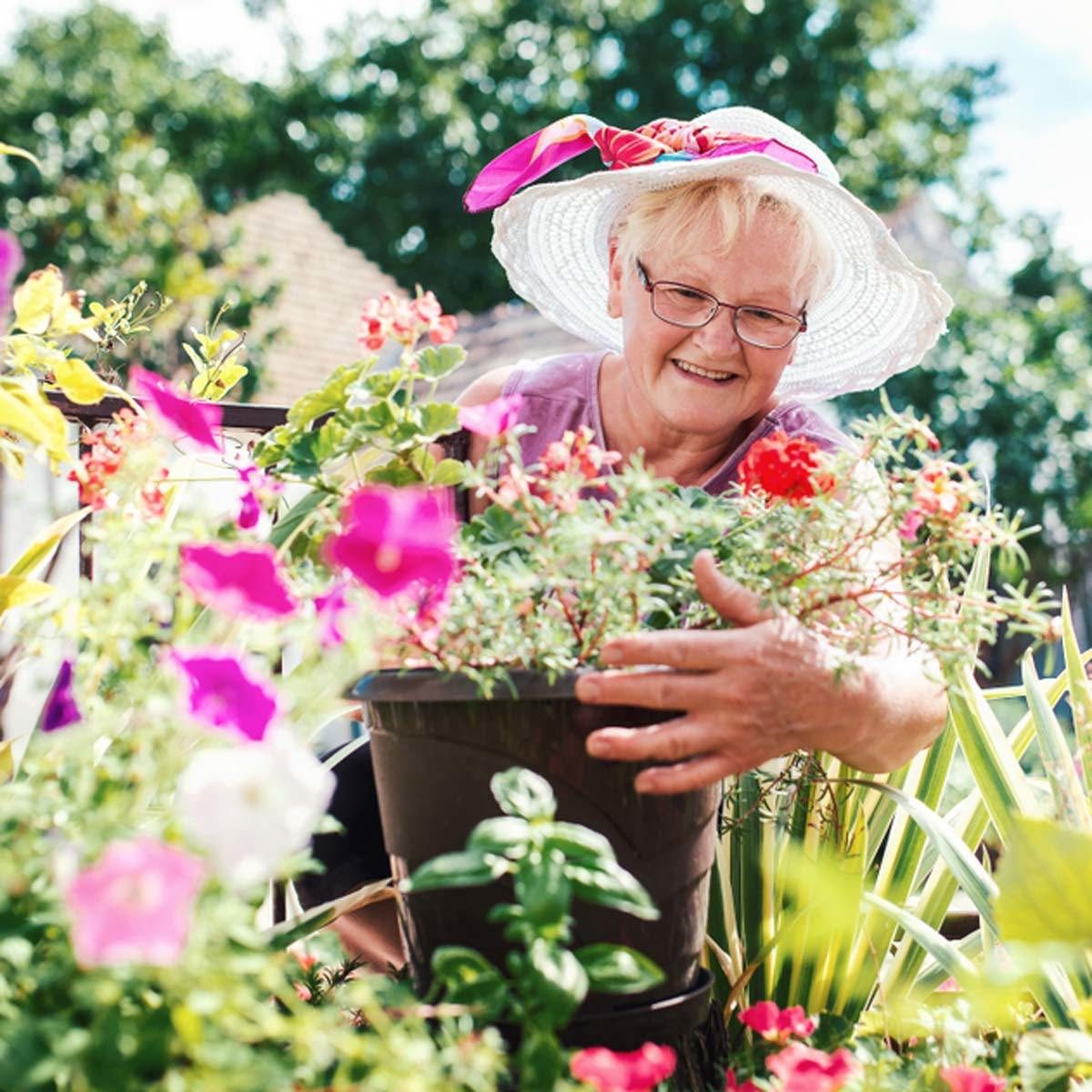
Reiterate a Scheme
Plan on replicating plant forms, colours and textures to easily fashion flow, a sense of movement and a harmonious whole garden.
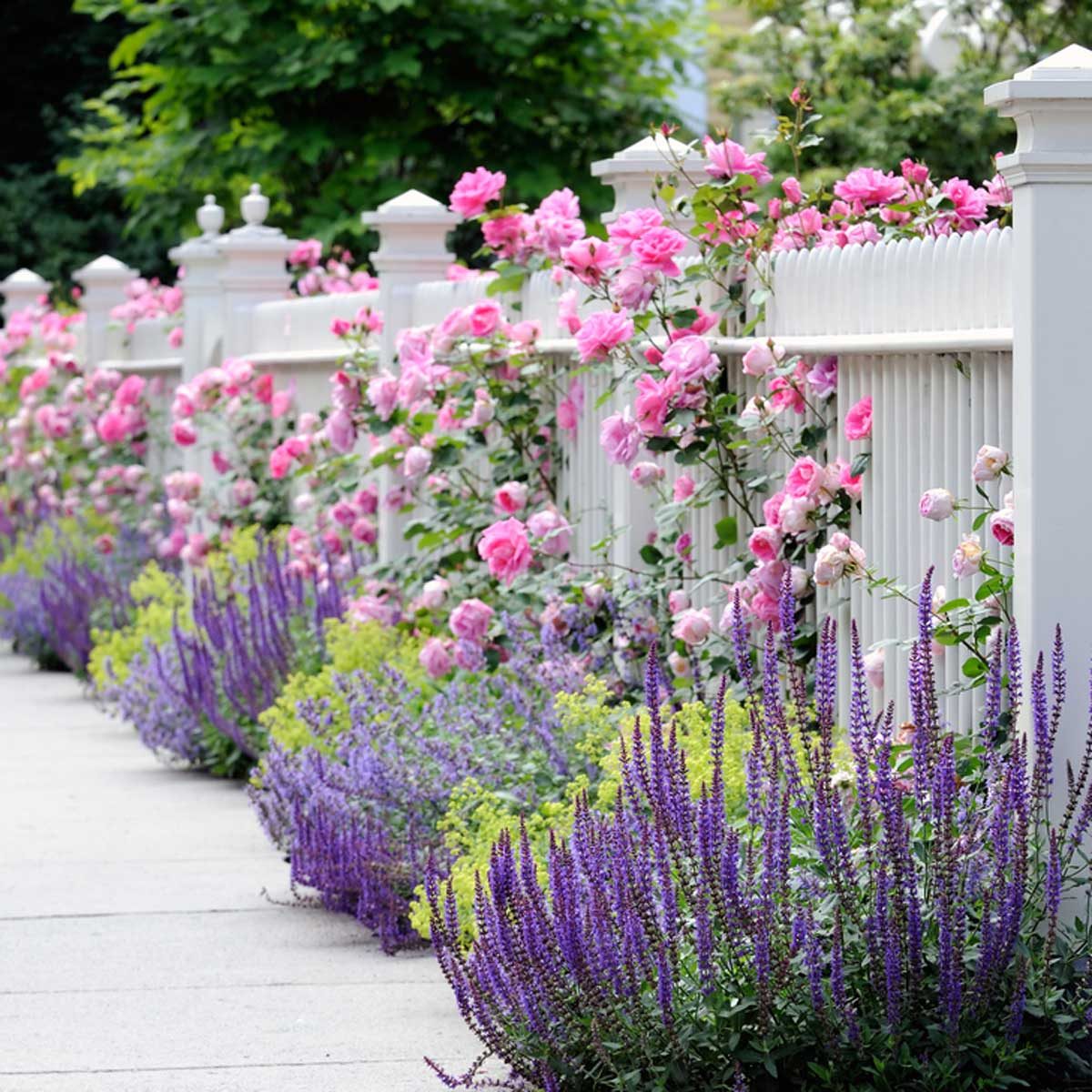
Forget the Finicky
Opt to include native plants or ones that are hardy and reliable in your planting zone—you won’t have to replace them down the road.
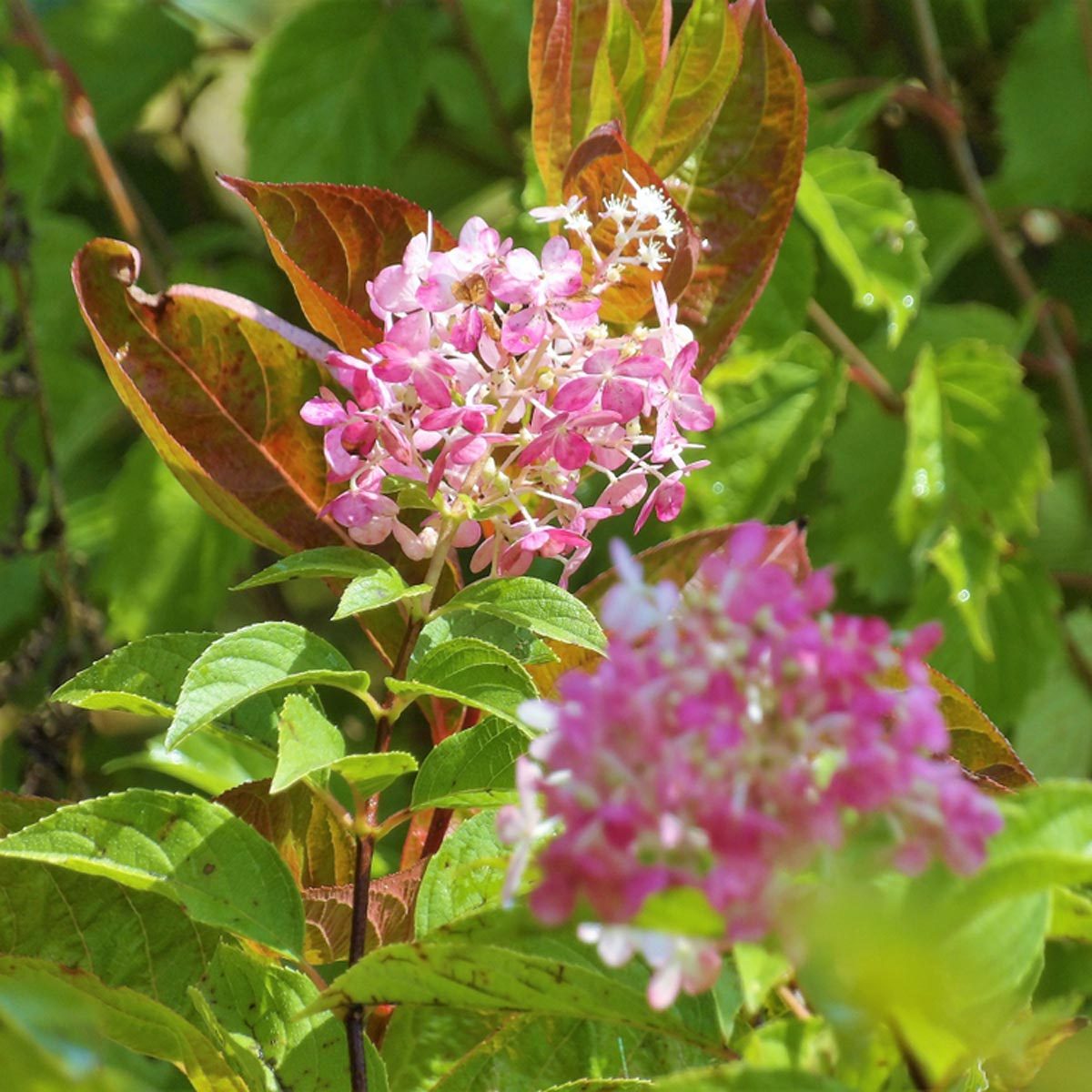
Look for Deals
Many spring garden catalogues offer inexpensive bare-root forsythia, hydrangea and red-twig dogwood saplings. The stick-like, rooted saplings take a few years to fill out and flower, but their bargain-basement prices allow you to mass their forms inexpensively or to add them throughout the landscape as a repeating element.
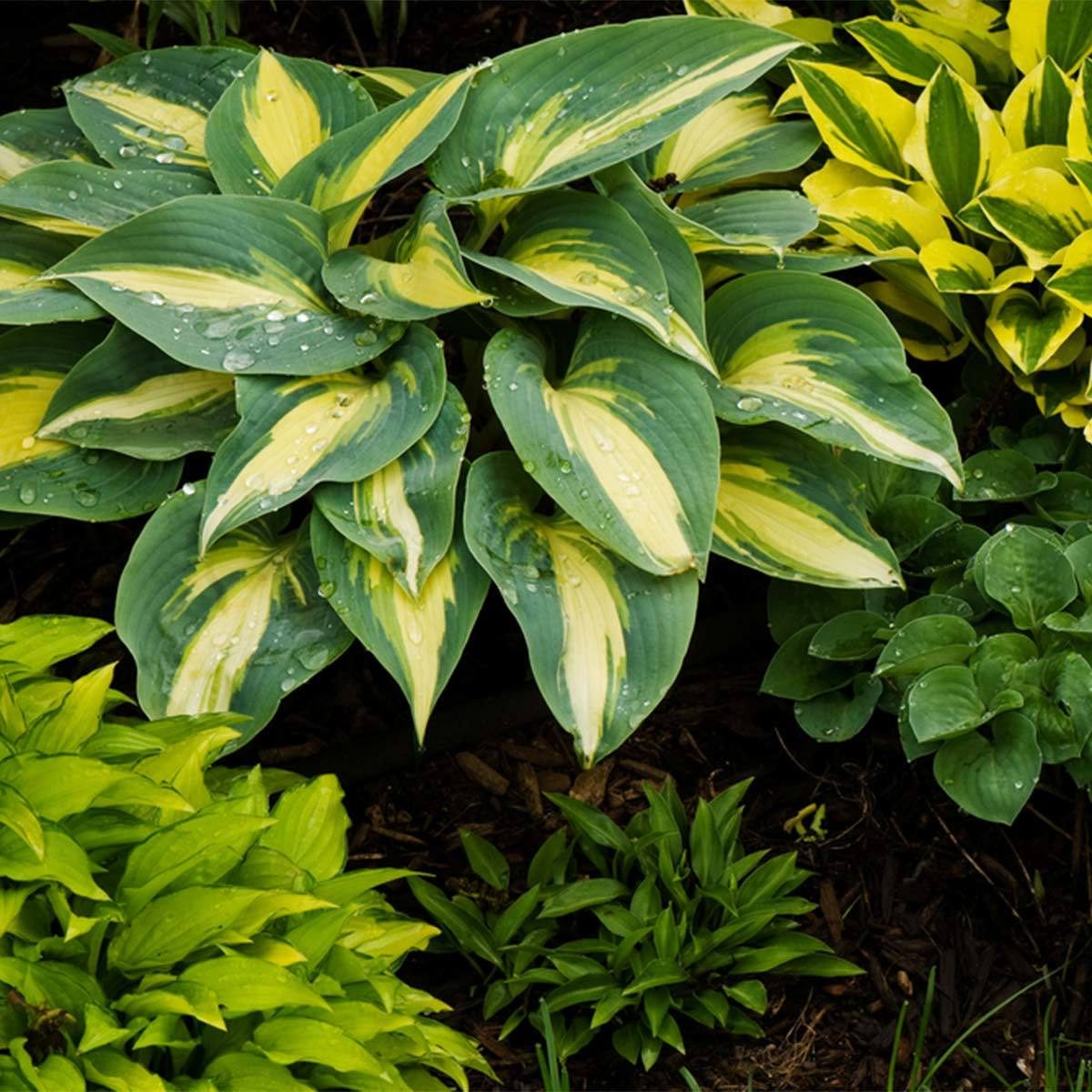
Invest in Gardener’s Gold
Incorporate plants—such as daylily, hosta, bearded iris, bee balm, purple coneflower and yarrow—that you can divide in a few years for more (free!) plants.
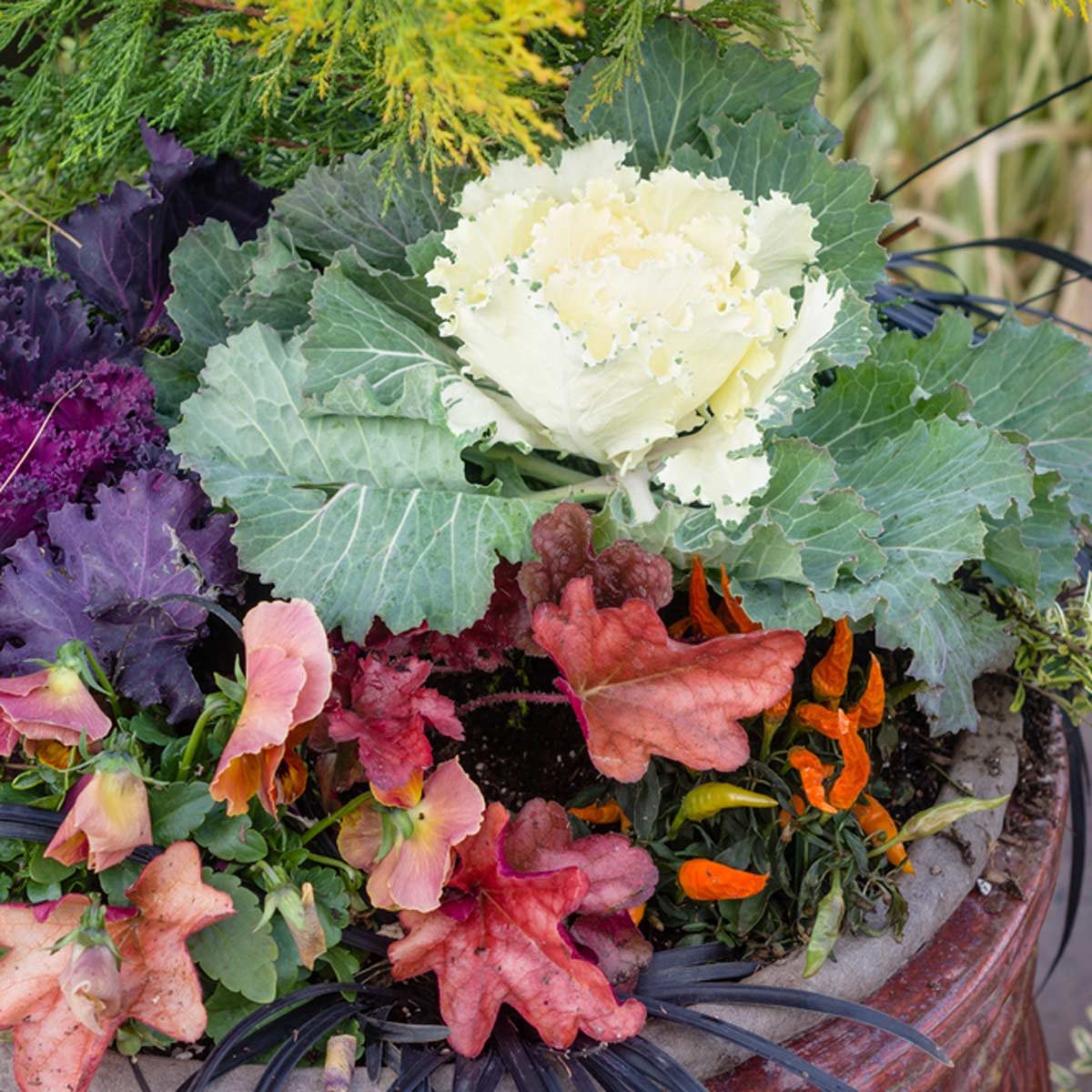
Think Foliage, Not Flowers
Sketch in plants with silver, gray, chartreuse, variegated and bright-coloured foliage for gardens that remain colourful as flowers fade. Don’t neglect the surrounding grass, either! Here’s the most efficient way to mow the lawn.
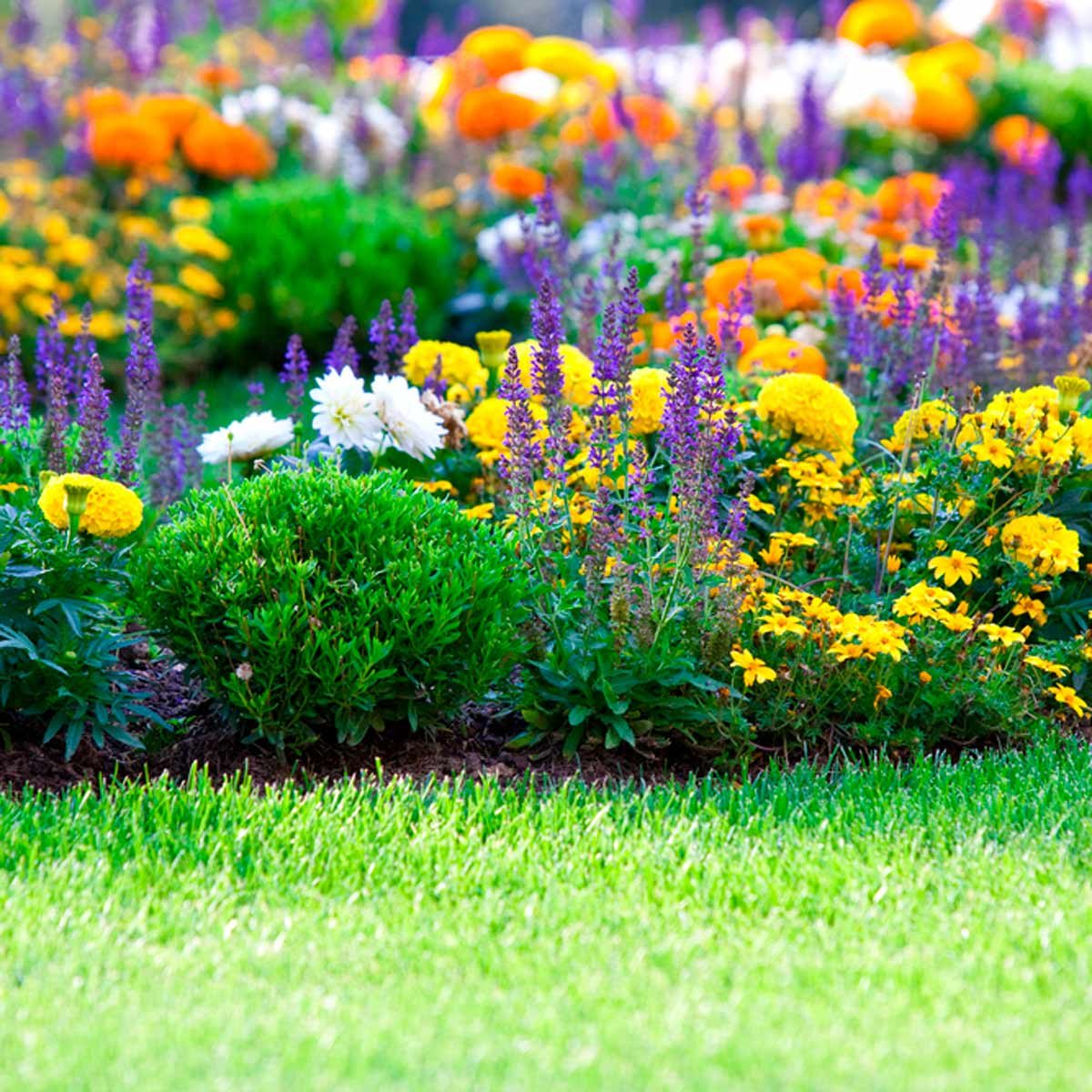
Consider Every Season
Slot in plants with different bloom times to ensure a succession of blossoms throughout the year.
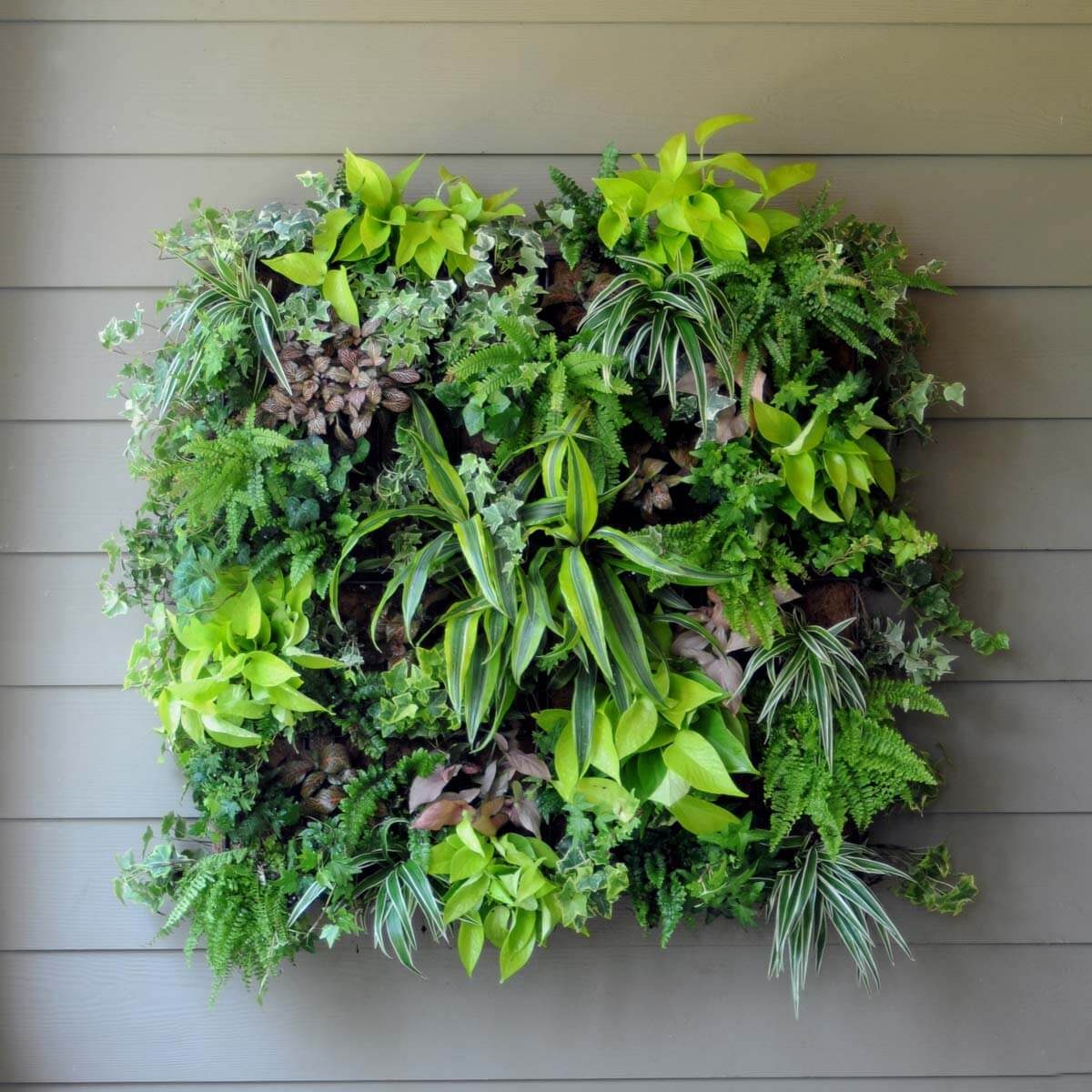
Plant a Living Wall
Pencil in trellises, hedges and plant groupings to camouflage unattractive views, define garden rooms and buffer traffic noise.
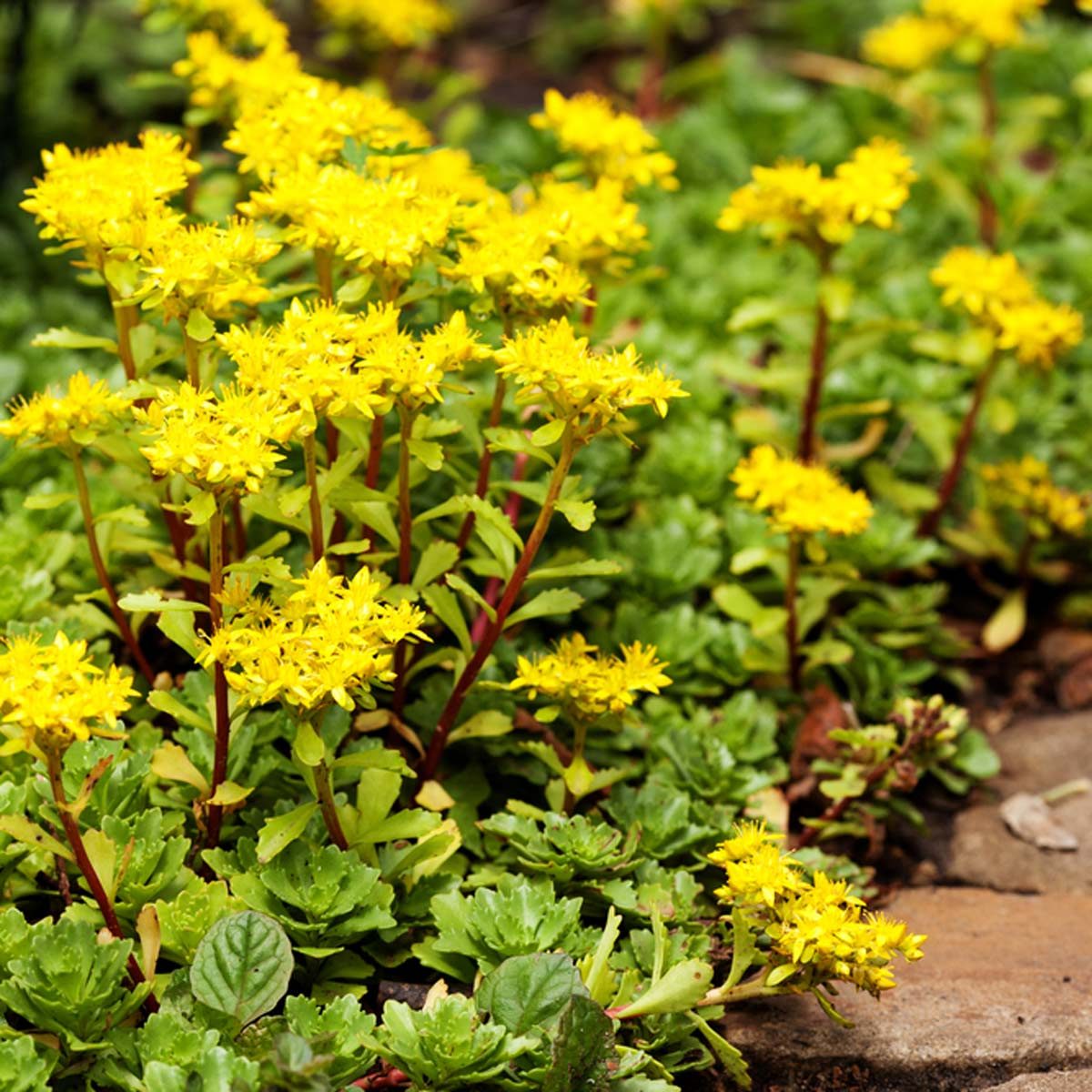
Supersize It
You’ll fill a lot of space without spending big bucks if you include large, quick-growing plants, such as Russian sage, fountain grasses, Autumn Joy sedum, hydrangea and shrub roses like Carefree Delight, Knock Out and Magic Carpet. Here are more great gardening tips that will save time and money.
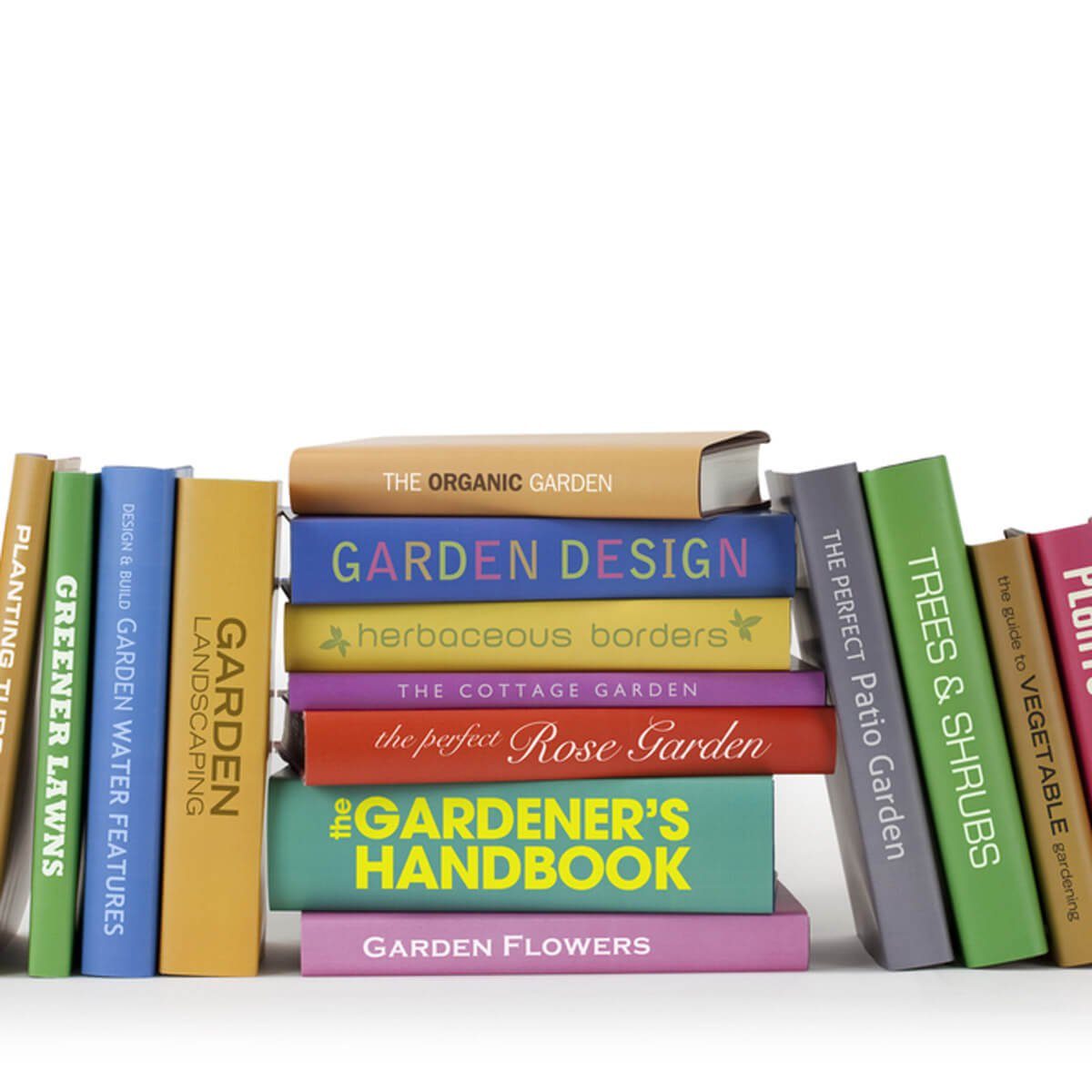
Contemplate Companions
Peruse garden books, plant catalogues and search online for garden images that showcase appealing plant combinations that you can duplicate in your design.
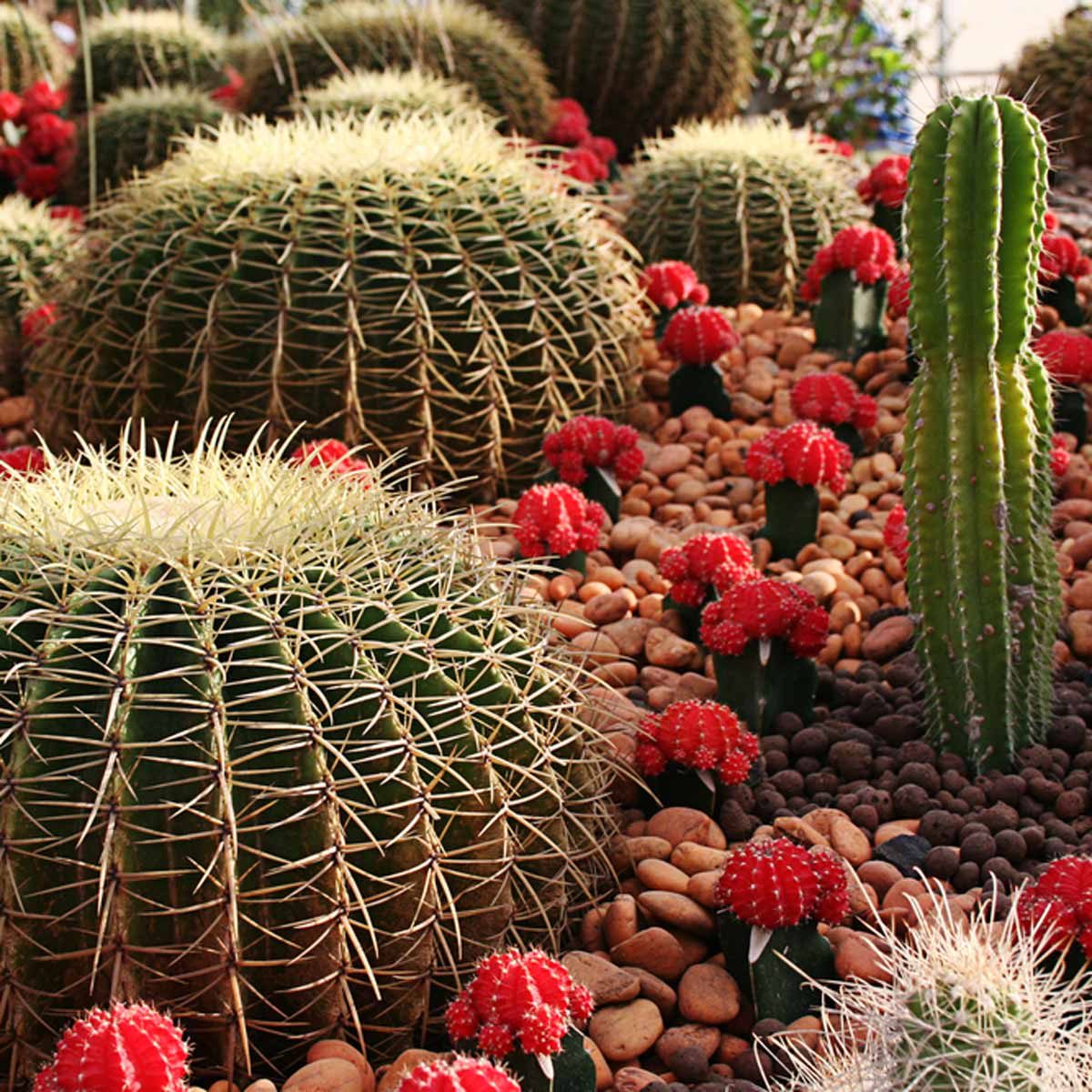
Pair Like-Minded Plants
Group those with similar light, water and soil requirements together—if you plant water-thirsty cultivars with drought-tolerant plants, you’re sure to lose one or both to either too-dry conditions or root rot.
Could you use a little extra good fortune? Consider adding these lucky plants to your garden.
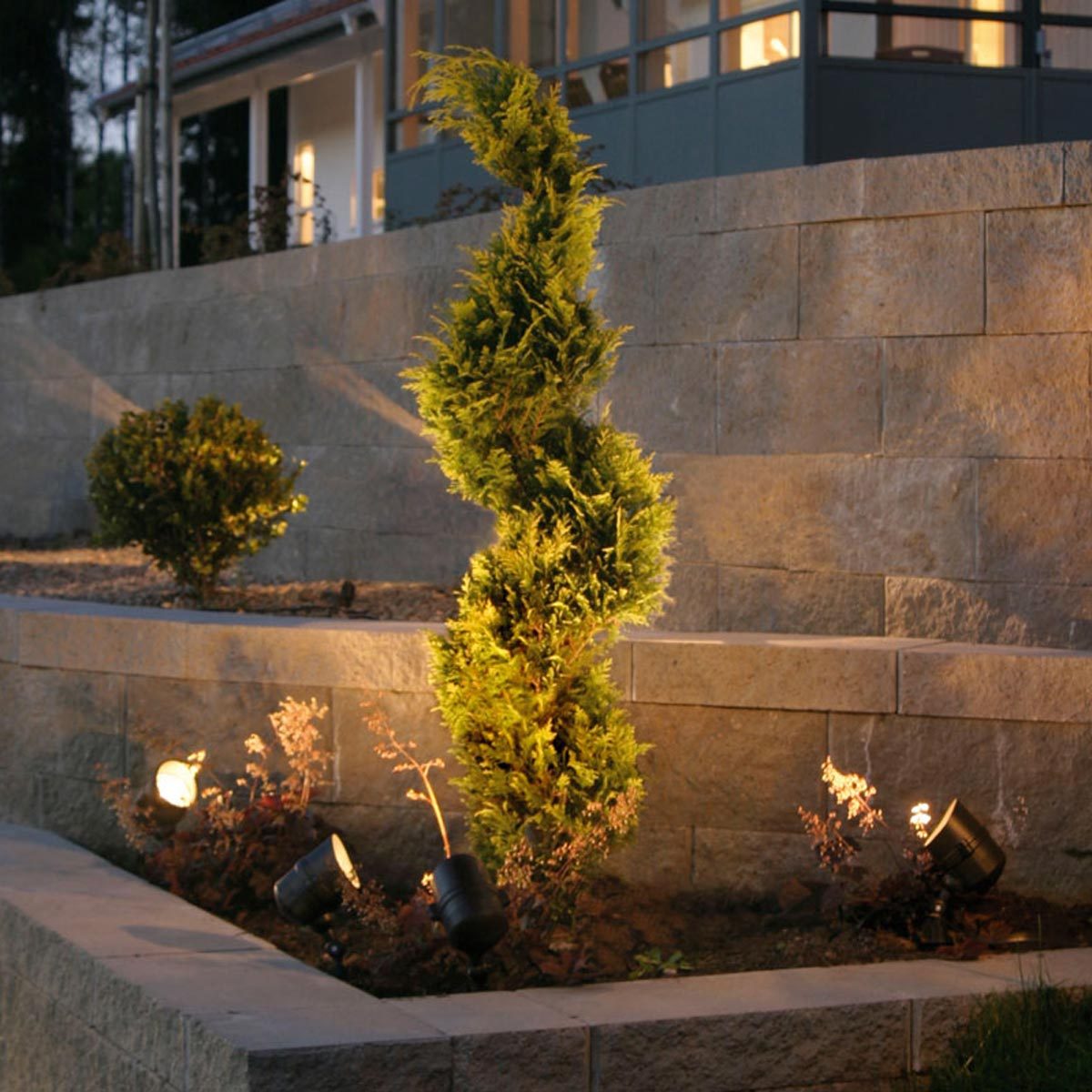
Enhance the Wow Factor
Add one or two plant groupings or shrubs that are sure to stop passersby in their tracks.
Psst—here’s why you shouldn’t mow your lawn every week.
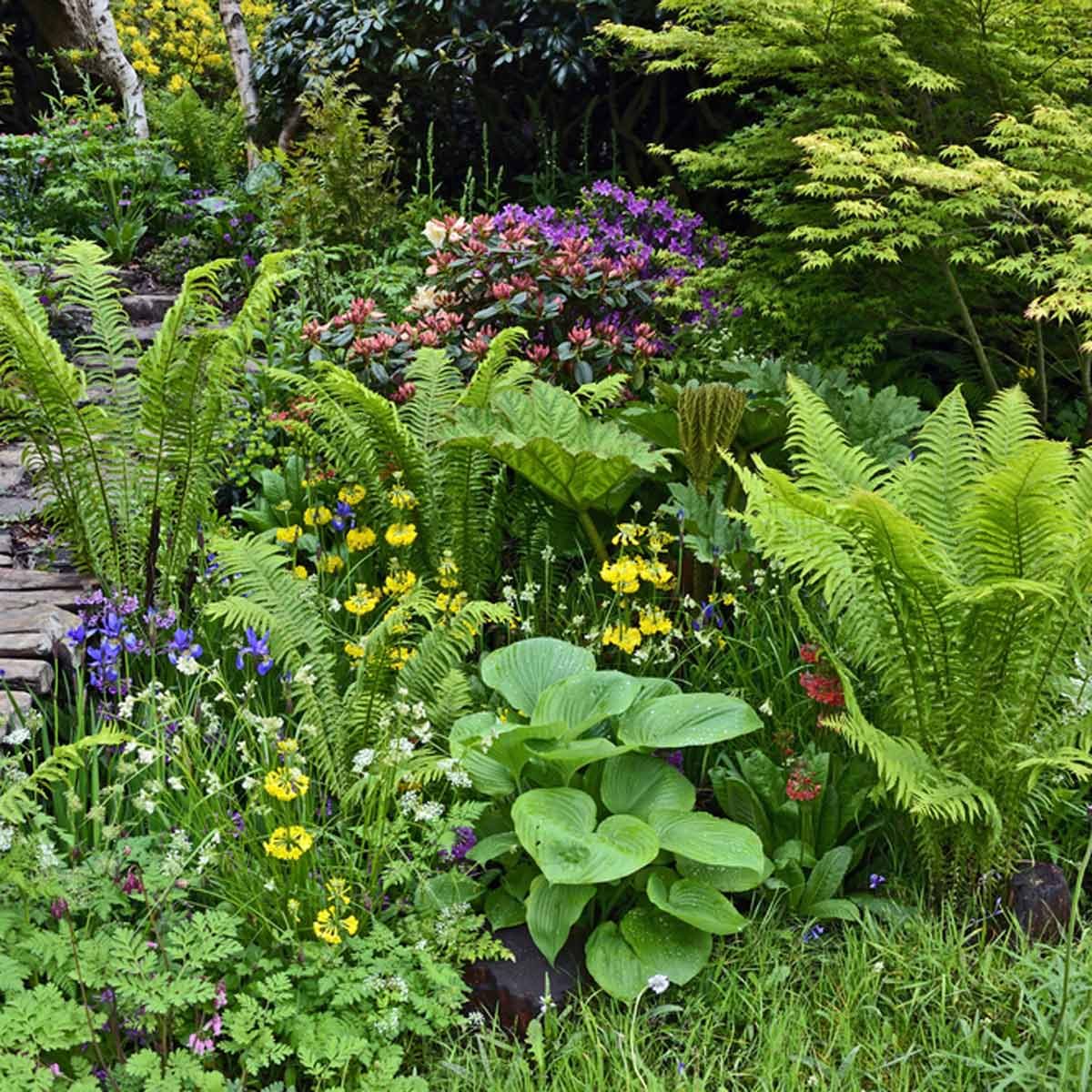
Vary Forms and Textures
Incorporate plants with ferny fronds, grassy spires, coarse spikes, fuzzy foliage, waxy surfaces and broad leaves in varying mounded, cascading and upright forms.
Next, check out these 24 genius gardening hacks you’ll be glad you know.